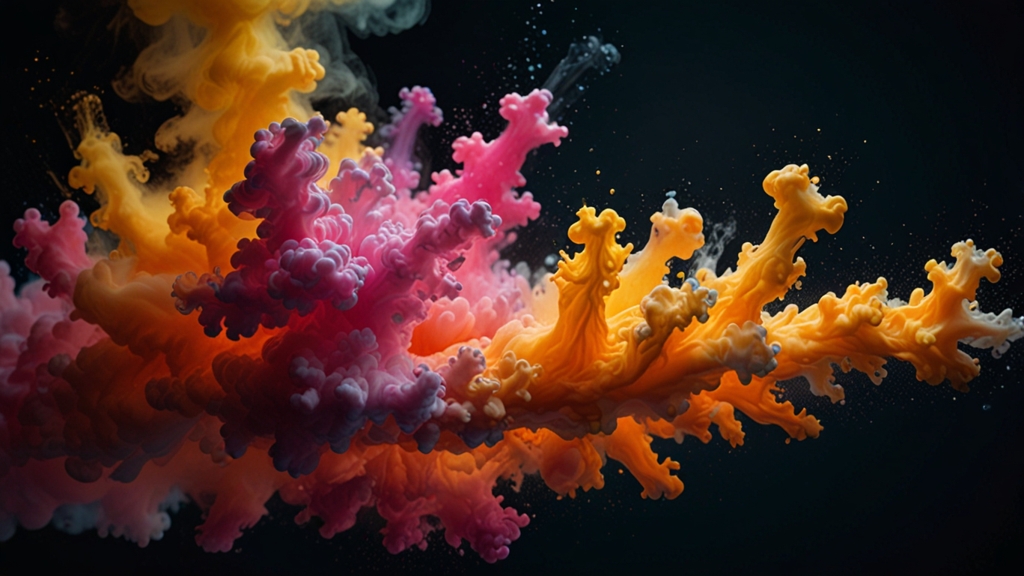Amazing Chemical Phenomena That Will Leave You Speechless
Chemistry often evokes memories of high school labs and complex equations, but beyond the textbooks lies a world of extraordinary phenomena that can both astonish and inspire. Here are some of the most amazing chemical phenomena that are sure to leave you speechless.
1. The Belousov-Zhabotinsky Reaction
The Belousov-Zhabotinsky (BZ) reaction is a stunning display of oscillating colors that defies the conventional understanding of chemical reactions. Typically, reactions proceed to equilibrium, but in the BZ reaction, the chemicals oscillate in a periodic manner, switching between different colors such as blue, red, and yellow.
"The beauty of the BZ reaction lies in its rhythmic dance of colors—a mesmerizing spectacle fueled by non-equilibrium thermodynamics."
This phenomenon occurs due to a complex set of reactions involving the oxidation and reduction of organic compounds, under very specific conditions. The result is a captivating, colorful show that looks almost alive.
2. Supercritical Fluids
Supercritical fluids exist in a state that combines properties of both liquids and gases. Beyond a certain temperature and pressure, substances enter this supercritical phase, exhibiting unique behaviors. One of the most commonly known supercritical fluids is supercritical carbon dioxide (CO₂).
Supercritical CO₂ is used in various applications, from decaffeinating coffee to creating eco-friendly dry cleaning. Its ability to dissolve substances like a liquid yet flow through materials like a gas makes it a versatile solvent, opening doors to numerous industrial and scientific applications.
3. Thermite Reaction
The thermite reaction is an exothermic reaction between a metal and a metal oxide, most commonly involving aluminum and iron(III) oxide. When ignited, the reaction produces molten iron and aluminum oxide, releasing an immense amount of heat, often reaching temperatures of around 2500°C (4500°F).
"Few reactions showcase the raw power of chemistry like the thermite reaction. It's a vivid reminder of the energy locked within chemical bonds."
This reaction is not only fascinating to watch but also has practical applications, such as welding railway tracks and metal cutting in emergency situations.
4. Chemiluminescence
Chemiluminescence involves the emission of light during a chemical reaction. Unlike incandescence, which requires heat to produce light, chemiluminescence releases light at cooler temperatures. One of the most famous examples is the glow emitted by fireflies.
In laboratories and industrial settings, chemiluminescence is used in various applications like detecting blood traces in forensic investigations with luminol and tracing biochemical reactions in research through bioluminescent markers.
5. Elephant's Toothpaste
Elephant's toothpaste is a popular demonstration of rapid decomposition, involving the breakdown of hydrogen peroxide into water and oxygen gas, catalyzed by potassium iodide or yeast. The rapid release of oxygen gas creates bubbling foam, which often shoots out of its container in a spectacular, toothpaste-like stream.
The reaction demonstrates the principles of catalysis and decomposition while providing an impactful visual experience. It is widely used in educational settings to ignite interest in the wonders of chemistry.
Conclusion
From the rhythmic oscillations of the Belousov-Zhabotinsky reaction to the dazzling display of elephant's toothpaste, chemistry offers phenomena that captivate the imagination and illuminate the incredible complexity of the world around us. These amazing chemical events are not just scientific curiosities—they are powerful reminders of the intricate and breathtaking patterns that govern the material universe.






